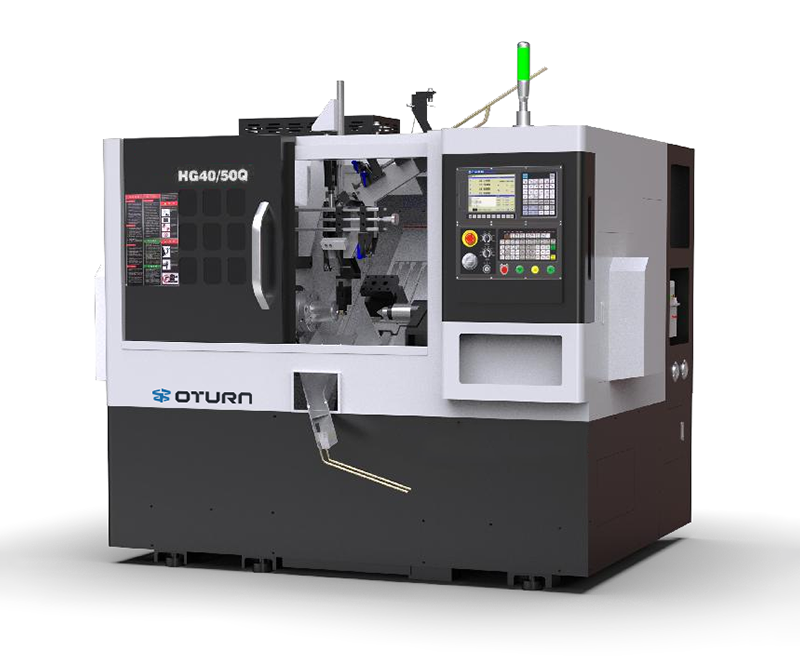During the machining process of the CNC lathe, the stepper motor acts as a key actuator, and its operating status directly affects machining quality and efficiency. This article summarizes common faults of stepper motors and their control systems, along with troubleshooting steps, to help users quickly locate problems and restore normal equipment operation.
I. The Stepper Motor Vibrates but Does Not Rotate
This phenomenon is usually caused by a phase loss in the stepper motor, which may be due to motor faults or driver circuit issues.
Troubleshooting steps:
· Check whether the stepper motor connector is properly connected.
· Swap any one phase wire of the motor and observe if it returns to normal. If normal after swapping, the motor is faulty; if still abnormal, focus on checking the high-power transistors and protection diodes on the driver board, as these components have a high failure rate.
II. Worktable Suddenly Stops During Machining, Stepper Motor Vibrates but Does Not Rotate
This fault is often caused by mechanical transmission parts jamming or damage, but control system faults are also possible.
Solutions:
· Power off and manually rotate the lead screw to check for abnormally high resistance or blockage at certain positions.
· Inspect the clearance between the nut and lead screw, the tightness of the slideway strips, the presence of foreign objects in the ball screw guide groove, bending or deformation of the lead screw, and looseness or jamming of flexible gears inside the stepper motor reducer.
· If no mechanical abnormalities are found, check the control system described in point 1.
III. Normal at Low Speed, Step Loss at High Speed
The stepper motor losing steps at high speed is often caused by a drop in drive power voltage, resulting in insufficient output torque.
Key checks:
· Inspect the high-voltage power supply and its switching transistor for damage.
· A damaged high-voltage transistor can prevent power supply conduction at high speed, reducing torque and causing step loss.
· Also check mechanical parts for bending, deformation, or foreign object jamming, as the increased load at high speed can trigger step loss.
IV. The Tool Does Not Return to Zero Position After Program Completion
This usually indicates a control system fault.
Cause analysis:
· During low-speed machining, the stepper motor uses low-voltage power with sufficient torque.
· Returning to zero requires high-speed operation powered by a high-voltage supply.
· If the switching transistor controlling the high-voltage power is damaged, high voltage cannot be output, causing step loss during return to zero.
Solution:
· Replace the damaged switching transistor to restore normal operation.
V. Tool Overruns Zero Position After Program Completion
This phenomenon is mainly caused by excessive mechanical transmission resistance.
Specific performance:
· During low-speed cutting feed, torque is small and step loss is likely.
· During high-voltage driven return to zero, torque is large and operation is normal.
Inspection recommendations:
· Check for iron filings or foreign objects in the reducer transmission gears and between the stepper motor and lead screw gears.
· Check whether the slideway strips are too tight, increasing resistance.
Common Factors Affecting CNC Lathe Machining Accuracy
Common causes of machining accuracy abnormalities include:
· Changes or improper settings of system parameters
· Mechanical faults or wear
· Unoptimized optical, mechanical, and electrical parameters causing motor anomalies
· Position loop abnormalities or improper control logic
By promptly identifying and addressing these issues, CNC special machine can restore normal machining accuracy.
With the above fault analysis and troubleshooting advice, users can quickly locate stepper motor and control system issues, ensuring stable and efficient CNC lathe operation, and thereby improving machining quality and productivity.
If you are looking for a high-performance and reliable CNC machine specialized for valve machining, Oturn offers a range of advanced equipment featuring excellent machining accuracy and automation capabilities, helping valve manufacturers achieve efficient production and quality improvement. Contact us to learn more about our products.
Post time: May-15-2025








